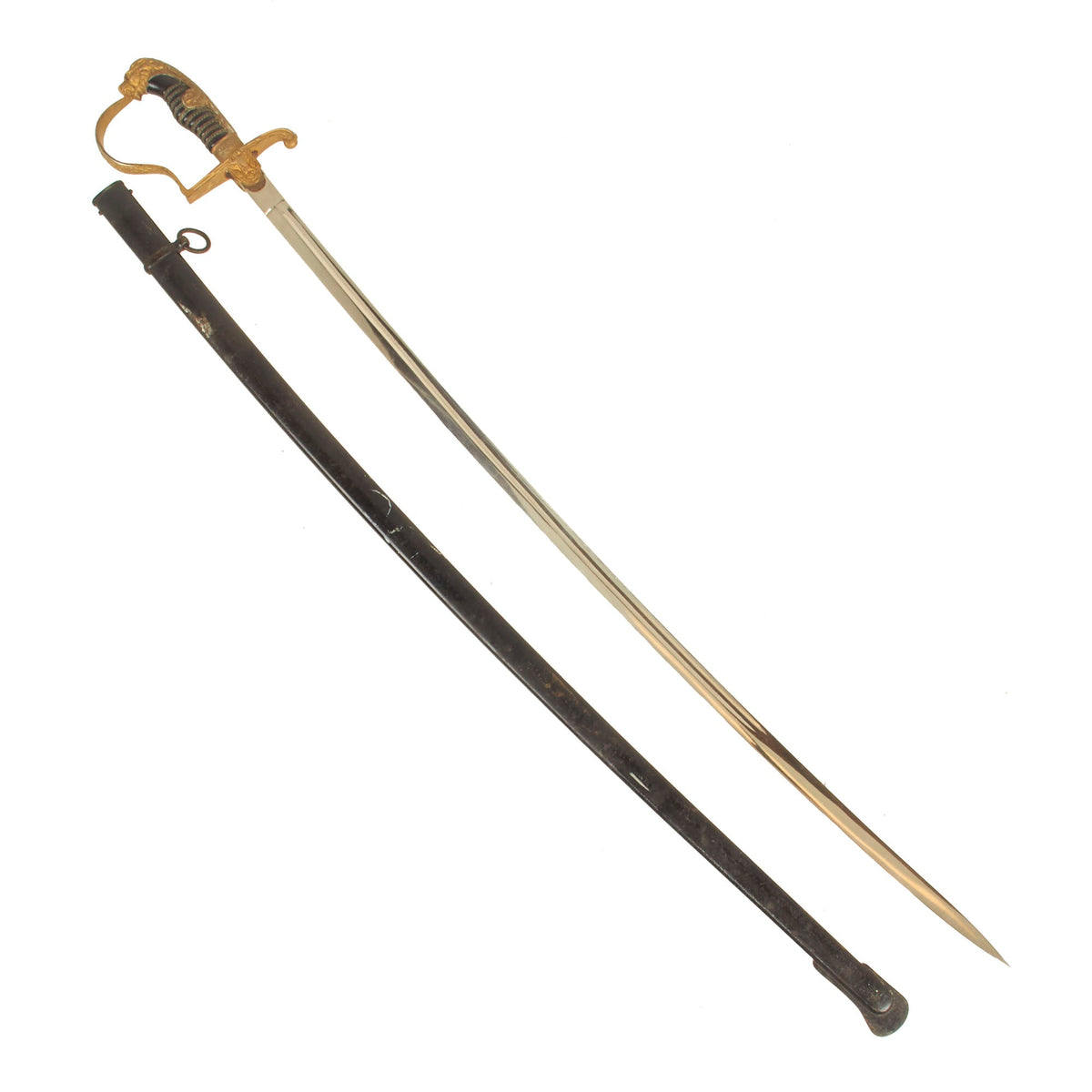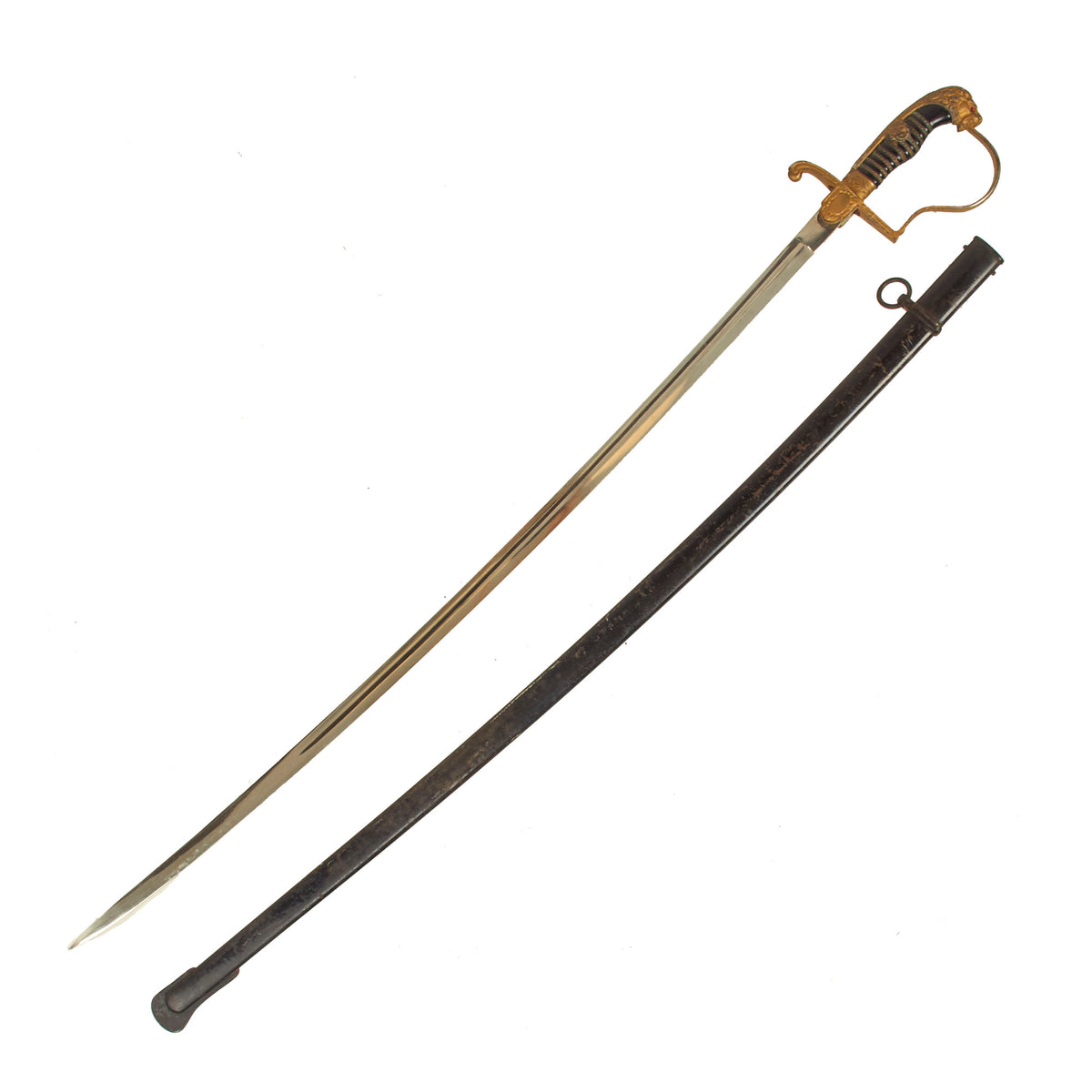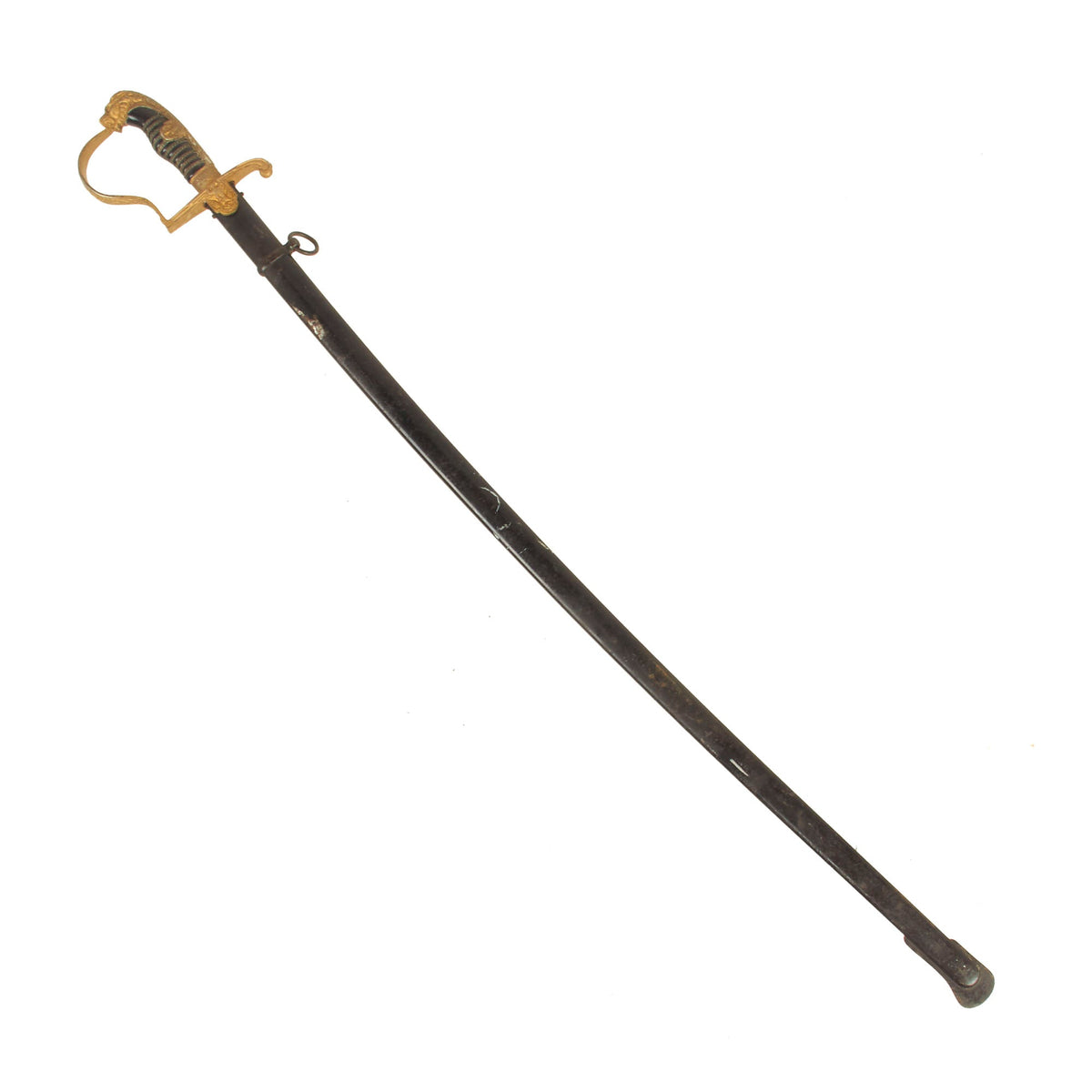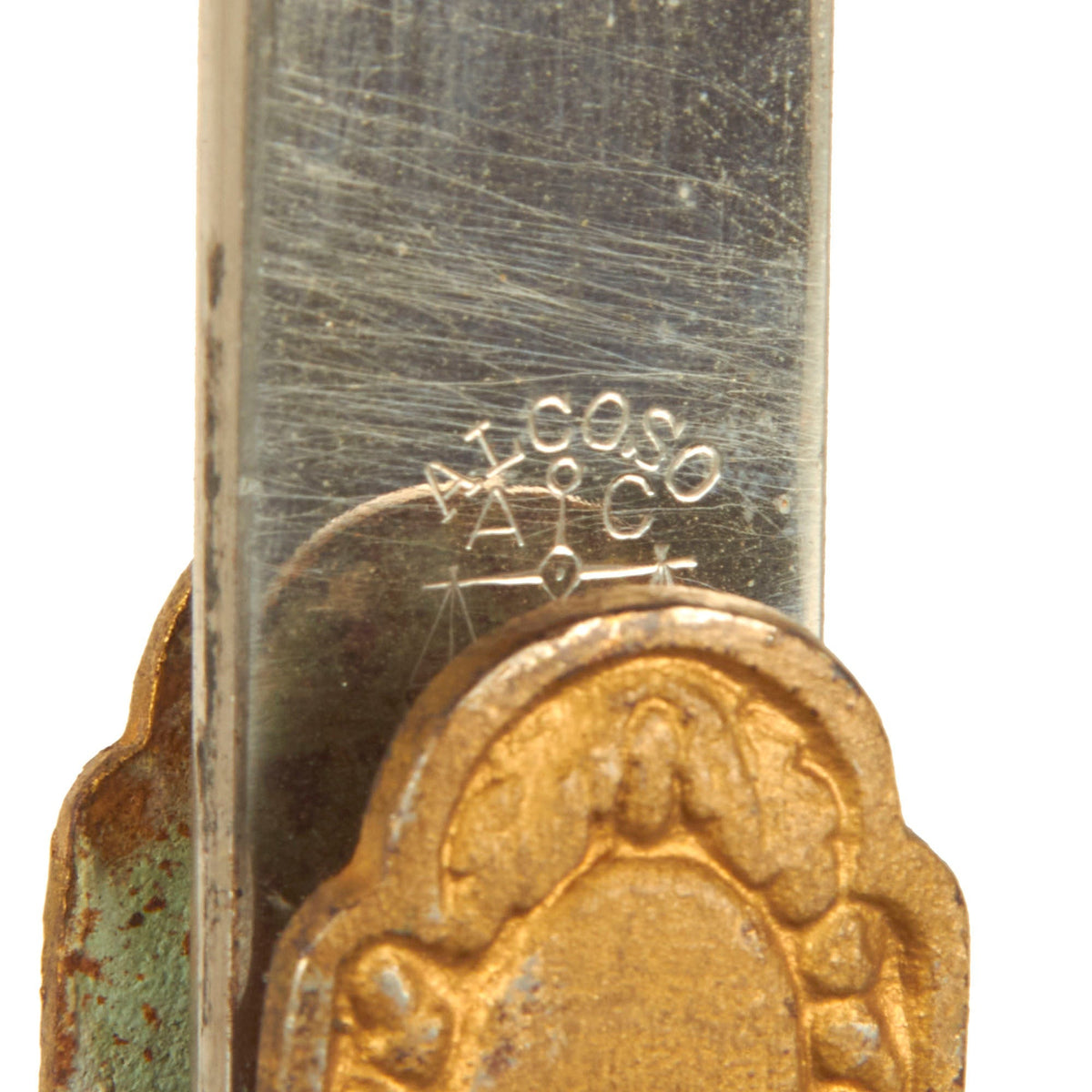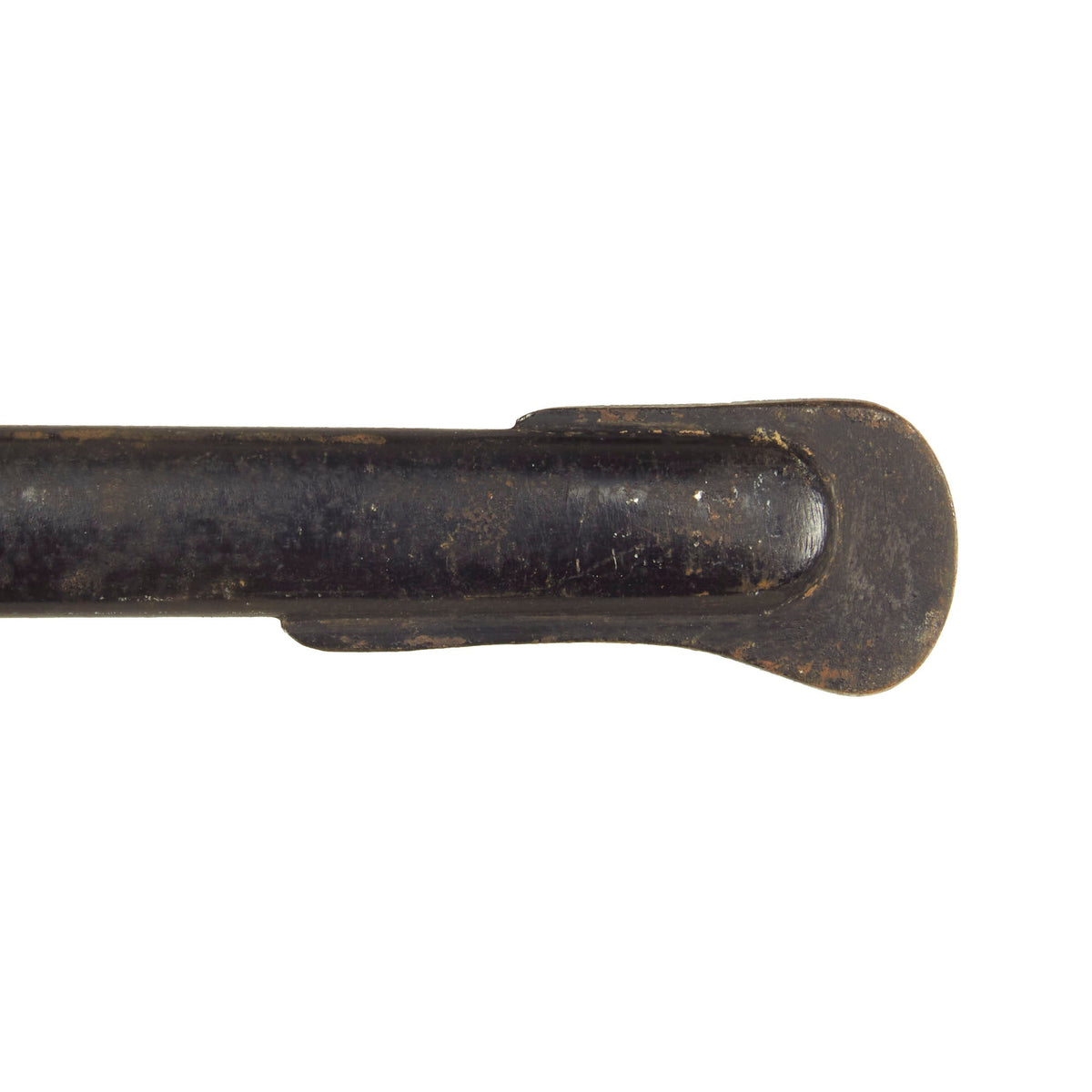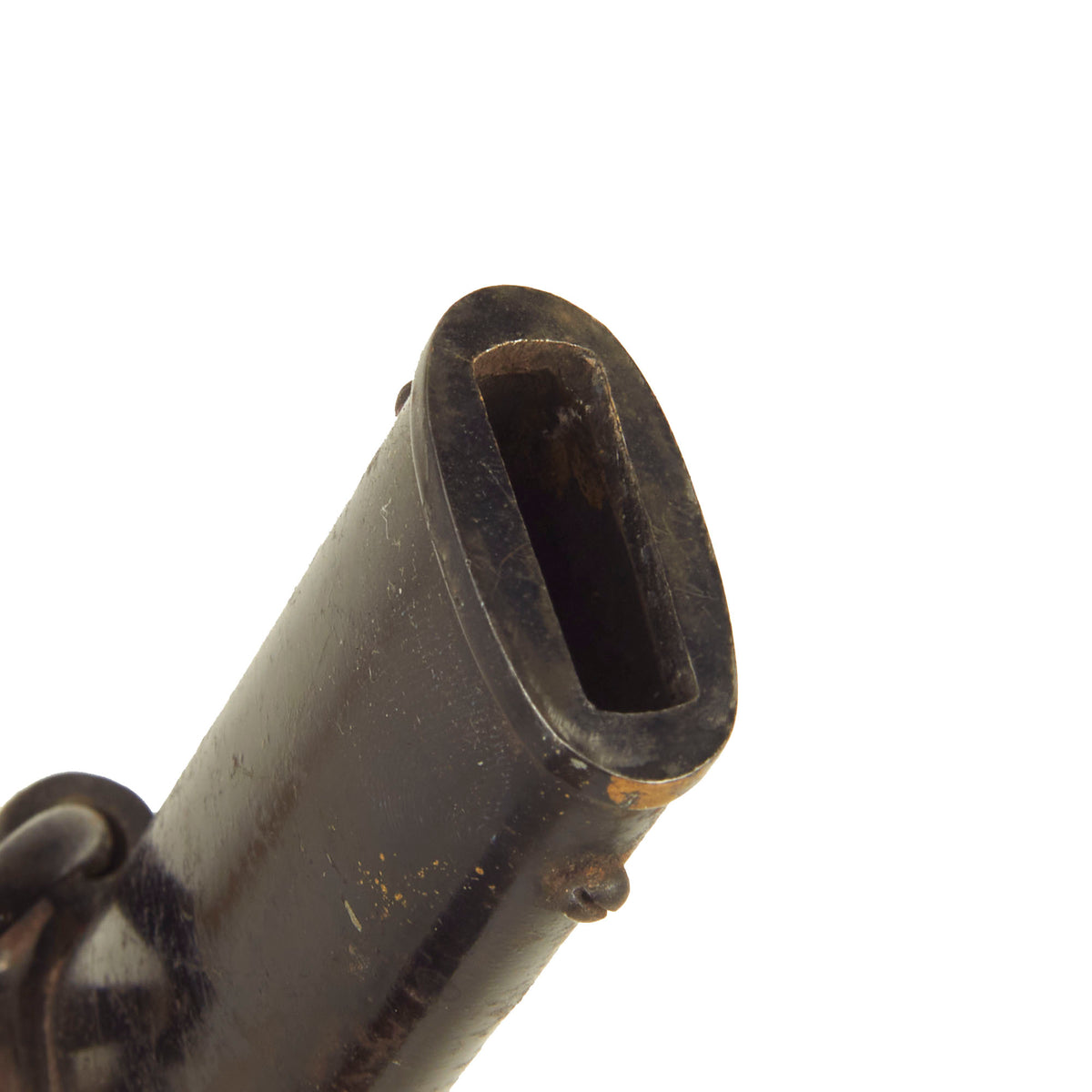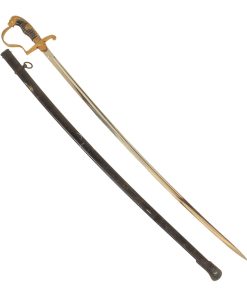Original German WWII Army Officer’s Lion Head Sword with Scabbard by ALCOSO of Solingen circa 1936 – 1940 Original Items
$ 595,00 $ 178,50
Original Item: This is a beautiful classic Lionhead German WWII Officer sword, made by the well-known firm of Alcoso Werke in Solingen, Germany, complete with the correct steel scabbard. The brass plated aluminum alloy hilt consists of a finely detailed lion head cat with art deco leaf backstrap and “P” guard. It does look like the hilt was possibly “touched up” with some gold paint at some point. The cat is fitted with blood red faceted eyes, which have a bit of gold paint on them. There is nice detail throughout his whiskers, chin, and muzzle, with the mane running down the backstrap a bit. The handwork is beautifully rendered throughout, and the backstrap design consists of the iconic German Oak Leaves and Acorns motif, which extends onto the grip side tabs. The “P” guard and ferrule both are covered with the same iconic German design.
The crossguard langet has a typical Alcoso style open winged eagle which looks to the viewer’s right. The breast area of this eagle, as well as the legs and the wreath enclosing the swas, have all been hand enhanced. The reverse langet has a small oval, where the sword would sometimes be personalized, but this one is blank. The brass plated aluminum alloy hilt still look s great, with some areas showing wear through to the aluminum.
The grip is an outstanding black celluloid-over-wood base. It is wrapped with three pairs of twisted wires, with the center pair being larger. There is no degradation to the celluloid, though there looks to be some dirt and possibly old polish on the wire wrapping. The entire hilt is still solidly attached to the blade, a real rarity!
The 31 1/4 inch blade of this example is in very good condition, with only some light scuffing in areas, and a small bend on the last 3/8″ of the blade. It is fully nickel plated, which is retained quite almost completely, showing scattered areas of light oxidation and scratching. The edge is still fully blunt, as originally issued, though there are a few small dents on the edge and on the spine
The reverse ricasso is stamped with the trademark Alcoso used from 1936-1940. It depicts the scales with the firm’s initials, ACS interspersed. Above is the firm’s name in an arc, ALCOSO, and below the town of business, SOLINGEN, the legendary “City of Blades” in Western Germany. The marking is partly under the langet, so it is not possible to photograph in its entirety
Alcoso is a trade name of Alexander Coppel & Co. KG, Stahlwarenfabrik, located in Solingen, the legendary German “City of Blades.” The company was a major manufacturer of edged weapons and tools from the end of the 19th century up until the WWII period. Unfortunately, as NSDAP-control increased, brothers Carl Gustav and Dr. Alexander Coppel, the Jewish owners of the firm, were forced out. In 1936 the firm had been “Aryanized”, and started using the name ALCOSO to hide the Jewish family name. By the end of 1936 the brothers were ejected from their Solingen offices, and by 1940 the brand trademark initials ACS were changed to AWS to reflect the change in ownership and name: Alexander Coppel Solingen to Alcoso-Werk Solingen. Carl Gustav Coppel committed suicide in Solingen in 1941, and Dr. Alexander Coppel was arrested in 1942 and sent to Theresienstadt Prison camp, where he died August 5th 1942. The factory itself was destroyed by Allied bombers in November 1944.
The scabbard of this example still has a good condition original factory black enamel finish, though there is crazing and checking due to age. It also shows areas of bubbling and scrapes, which have allowed the steel to oxidize. There are however no dents we can see or feel, and the scabbard body is still completely straight. It still has the correct hanger ring and loop for hitching up the sword against the belt vertically.
Overall an very good example of a German Army Officer’s Lion Head sword, from a maker with a somber back story.
Specifications:
Overall length: 36 1/4”
Blade length: 31 1/4”
Blade Style: Single Edged with Fuller
Guard dimensions: 4 1/2″ width x 4 1/2” length
Scabbard Length: 32 1/2″
The German Army (German: Heer, was the land forces component of the Wehrmacht, the German armed forces, from 1935 to 1945. The Wehrmacht also included the Kriegsmarine (Navy) and the Luftwaffe (Air Force). During World War II, a total of about 15 million soldiers served in the German Army, of whom about seven million became casualties. Separate from the army, the Waffen-SS (Armed SS) was a multi-ethnic and multi-national military force of the Third Reich. Growing from three regiments to over 38 divisions during World War II, it served alongside the army but was never formally part of it.
Only 17 months after AH announced publicly the rearmament program, the Army reached its projected goal of 36 divisions. During the autumn of 1937, two more corps were formed. In 1938, four additional corps were formed with the inclusion of the five divisions of the Austrian Army after the Anschluss in March. During the period of its expansion by Adolf AH, the German Army continued to develop concepts pioneered during World War I, combining ground (Heer) and air (Luftwaffe) assets into combined arms teams. Coupled with operational and tactical methods such as encirclements and the “battle of annihilation”, the German military managed quick victories in the two initial years of World War II, prompting the use of the word Blitzkrieg (literally lightning war, meaning lightning-fast war) for the techniques used.
The German Army entered the war with a majority of its infantry formations relying on the horse for transportation. The infantry remained foot soldiers throughout the war; artillery also remained primarily horse-drawn. The motorized formations received much attention in the world press in the opening years of the war, and were cited as the main reason for the success of the German invasions of Poland (September 1939), Norway and Denmark (April 1940), Belgium, France and Netherlands (May 1940), Yugoslavia (April 1941) and the early campaigns in the Soviet Union (June 1941). However their motorized and tank formations accounted for only 20% of the Heer’s capacity at their peak strength.
Fast Shipping with Professional Packaging
Thanks to our longstanding association with UPS FedEx DHL, and other major international carriers, we are able to provide a range of shipping options. Our warehouse staff is expertly trained and will wrap your products according to our exact and precise specifications. Prior to shipping, your goods will be thoroughly examined and securely secured. We ship to thousands clients each day across multiple countries. This shows how we're dedicated to be the largest retailer on the internet. Warehouses and distribution centres can be located throughout Europe as well as the USA.
Note: Orders with more than one item will be assigned a processing date depending on the item.
Before shipping before shipping, we'll conduct a thorough inspection of the items you have ordered. Today, the majority of orders will be delivered within 48 hours. The delivery time will be between 3-7 days.
Returns
The stock is dynamic and we cannot completely manage it because multiple stakeholders are involved, including our factory and warehouse. So the actual stock may alter at any time. It's possible that you may not receive your order once the order has been made.
Our policy is valid for a period of 30 days. If you don't receive the product within 30 days, we are not able to issue a refund or an exchange.
You can only return an item if it is unused and in the same state as the day you received it. You must have the item in its original packaging.
Related products
Uncategorized
Uncategorized
Uncategorized
Uncategorized
Australian WWII Owen MK1 Machine Carbine SMG Custom Fabricated Replica with Sling Original Items
Uncategorized
Uncategorized
Uncategorized
Band of Brothers ORIGINAL GERMAN WWII Le. F.H. 18 10.5cm ARTILLERY PIECE Original Items
Uncategorized
Uncategorized
Uncategorized
Uncategorized
Uncategorized
Uncategorized
Uncategorized
Uncategorized
Uncategorized
